#Widescreen Studios
Explore tagged Tumblr posts
Text
The Rasmus - Creatures of Chaos (Video Klip)
The Rasmus‘un Playground Music Scandinaiva AB / Better Noise Music etiketiyle çıkan yeni single çalışması “Creatures of Chaos”un video klibi 28 Mart 2025’te yayınlandı. Söz ve müziği Lauri Ylönen, Marti Frederiksen ve Desmond Child ait olan şarkının yapımcılığını Marti Frederiksen ve Desmond Child üstlendi. Widescreen Studios’ta çekilen ve Aleksei Kulikov yönettiği şarkının video klibinin…
#Aleksei Kulikov#Annaliina Raittinen#Anni Minkkinen#Better Noise Music#Creatures of Chaos#Desmond Child#Jasmin Geselle#Klip#Lauri Ylonen#Lyrics#Marti Frederiksen#Music Video#Playground Music Scandinaiva AB#Rock#Rock Müzik#Şarkı Sözleri#Sözler#The Rasmus#The Rasmus - Creatures of Chaos#Video#Video Klip#Virko Kuusk#Widescreen Studios
0 notes
Text
Watching kikis delivery service and crying
2 notes
·
View notes
Text
MY. NEW. STANDING. DESK. IS. HERE!!!!!!!!!!
Had a super busy day at work and then came home and basically spent the evening building my desk. AH.
I’m so happy. I spend so much time working, and I’m tired of feeling constrained to sitting. A STANDING DESK!!!!
#my home office set up is fucking fire#I also have a 34in widescreen and studio quality speakers#the year of turning 30 commences#with a fucking BANG#for me#journal
0 notes
Text
Uhhh I have autism and me and my ma both are obsessed with rock and rule aka that weird animated movie from the 80s-
But my discord name (icy hot) comes from snow miser and heat miser because they were a big obsession for me a few years back :]
I don't know who to tag so I'll tag my other account @secretagent-lemonshork and @andromeda-absurdity because you're on my dash all the time lol
Tag game🎉
Tag your moots and ask them where they got the idea for their tumblr accounts name!
For my name it was a nickname I was giving back in middleschool! One of our teacher had a system where we worked with 'wifi' eachtime we talked in class we lost a bar of the "wifi" (was a weird joke and we never held count on that) All the kids usually joked if they needed 'wifi' , they would borrow mine if they wanted to talk more. (I was incredibly shy in middle school, I only talked to like 3 people at school;^;)
They called me Ms. Wifi because of that. I just thought it would be funny if I put 'miss' instead of 'ms' because of my terrible actual wifi connection I have at home lol.
That's my story! Now moots, only if you guys want to, tell us your story.
Tags-> @slipping-lately @firequeenofficial @noagskryf @twinklstarrrr @halfbakedspuds @polterwasteist @rokushi-san @mygedagtes +anyone that sees this and wants to do this as well
#tag game#tag challenge#i have audhd so bad#omar is my wife angel is my husband#simple as that#born to raise hell and send love through are songs that show up often on my playlists#also the shit that movie went through during production#the whole studio butned and they lost the widescreen version#rock and rule#<- this thing needs love
9K notes
·
View notes
Note
do you have any advice for those just starting out using renpy/ making games?
im still learning my way around renpy and making visual novels and what works best ..here are some personal findings:
..try to replace renpys default ui and mess with the options.rpy and screens.rpy right away , the more time put into it the easier it will become to make something unique to your senses. you can change basically everything. you dont have to make a widescreen vn either..4:3, square or portrait mode are possible as well
..look into layered images, the feature is really awesome if you want sprites that change outfits or want to be able to do unique expression combinations without having to save a png of every one
..its good to define characters, atl(animations), images, transitions etc each in their own .rpy file. you can make as many .rpy files as you need and you dont have to only use "script.rpy" to write your story. i divide my script into act files to make it easier..
n some not renpy stuff:
..this software helps you take breaks and avoid RSI and it is pretty invaluable for me. it will track based on the time you spend moving your mouse or keyboard. this also helps keep on task n if you get distracted you're more aware of it.
..if you are a writer, i cant recommend getting an alphasmart neo2 enough. especially if you cant handwrite. its an old device that lets you type textfiles without a bluelight screen. you can 'send' what you write directly to your computer through a printer cable and it types it out. it fits plenty and its useful for writing script outside the computer. refurbished ones on ebay are good.
..its easy to get really overambitious and perfectionist and then not make anything as a result..my advice if this comes up is to prioritize the existence of the thing rather than its ability to match the impossible image in your head. that ideal picture will always be shifting into more impossible territory as you improve anyway, so think about what you're actually capable of and make it actually happen!! important to remember ur not triple A studio.. being independent is an advantage cuz you can do anything!
thts all i can get from the top of my head tht i havent said here before(ithink?)..i think about the last one a lot honestly i think thats my best advice i have if you can call it that
hopefully this helps.. good luck with your vn/game!
133 notes
·
View notes
Note
Hi! I’m trying to draw floor plans of 35 Portland Row, and I’m wondering if you know if it was a set in a film studio or if it was in the actual house. There’s some odd things that don’t add up, and they are making me think it’s a film studio set. The basement ceiling height is all wrong, and there seems to be an extra floor on the facade than in the interior. (If it’s a film set interior then I can have many more liberties with the plans- it will be more odd but more fun.)
Big fan of your work, btw. :)
SO here's a fact for you. Not only was the entire interior filming done on a studio set rather than at the house, George (Ali Hadji-Heshmati) NEVER visited the real house! Ali told us this at the January Meet.
The scene with him at the front door was also filmed on set rather than location. According to Joe Cornish, the real house was "too pokey".
You can find out more about where each scene was filmed using this link and clicking on the episode: https://georgesgazetteer.blog/lockwood-co-tv-series-locations-by-scene-6/
As regards fitting the floor plans for 35, Portland Row to a realistic layout - you can't really. Attached is @ironandbiscuits version which is as close as you can get. The 'official' concept art cut through doesn't fit the actual TV version.

If you go to: https://locknation.org/theres-room-for-all-at-portland-row-version-2/ (view on a 4:3 desktop not on your phone or widescreen), you can see how all the rooms fit in.
Thank you for your support! Lots more coming!
****edited to include picture of the set version of PR’s front door! ****

#lockwood and co#anthony lockwood#bring back lockwood and co#save lockwood and co#georgesgazetteer#lucy carlyle#savelockwoodandco#george karim#locklyle#lockwoodlocations
25 notes
·
View notes
Text
System Shock 2: 25th Anniversary Remaster launches June 26 - Gematsu
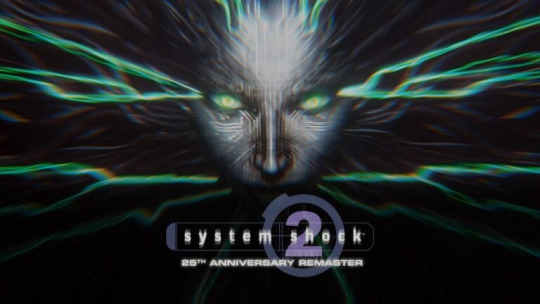
System Shock 2: 25th Anniversary Remaster will launch for PlayStation 5, Xbox Series, PlayStation 4, Xbox One, Switch, and PC via Steam, Epic Games Store, GOG, and Humble Store on June 26, developer Nightdive Studios announced.
Here is an overview of the game, via Nightdive Studios:
About
System Shock 2: 25th Anniversary Remaster by Nightdive Studios brings to you the modernized remaster of the first-person shooter / RPG classic. It’s the year 2114 and as you awake from cryo sleep on the FTL ship Von Braun, you are unable to remember who or where you are… and something has gone terribly wrong. Hybrid mutants and deadly robots roam the halls while the cries from the remaining crew reverberate through the cold hull of the ship. SHODAN, a rogue AI bent on the destruction of mankind has taken over and it’s up to you to stop her. Delve through the corridors of the derelict ship Von Braun and immerse yourself in the story rich atmosphere and environments. Explore deck by deck and unravel the horrifying fate of the Von Braun and her crew.
Key Features
Unknowable Horrors, in High-Definition – Completely remastered visuals, extending to cutscenes and character and weapons models, with up to 4K 144 frames per second support on PC and up to 120 frames per second on PlayStation 5 and Xbox Series X|S
Might As Well Make Your Death Comfortable – The game includes settings for an adjustable FOV, post-processing effects, and ultra-widescreen support
Armed Forces – Choose from an O.S.A., Marine, or Navy background to experiment with different playstyles
Misery Loves Company – Drag your friends into the hell that is the Von Braun starship in cross-play co-op multiplayer
Interface This – Play from the comfort of your couch with gamepad support, then celebrate with an ice-cold medical stim when you unlock 50 new Trophies/Achievements
If You Want Something Done Right – Full mod support on PC and the ability to implement community-made missions at launch
Watch a new trailer below.
Release Date Trailer
youtube
#System Shock 2: 25th Anniversary Remaster#System Shock 2#System Shock#Nightdive Studios#Gematsu#Youtube
4 notes
·
View notes
Text
A beginner’s guide to symphonic metal in 5 albums
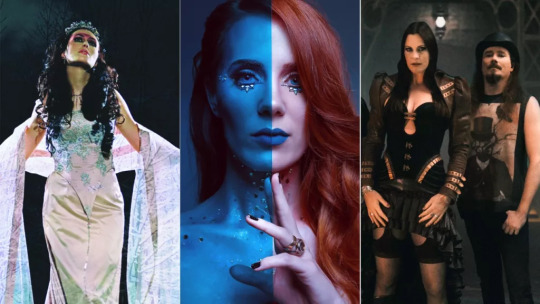
Few genres do grandiose like symphonic metal. As the name suggests, it marries the scope and ambition of classical music to the power of metal. The result is orchestral, opulent and sometimes OTT, but it’s a hard heart that is completely resistant to it.
The seeds of the sound were sown in the 80s, when diverse trailblazers such as Celtic Frost and Savatage began incorporating orchestral instruments into their music. But it began to accelerate in the late 1990s, with bands such as Therion, Nightwish, Within Temptation and cult favourites Haggard began to properly fuse the two genres.
Today, symphonic metal has become an unlikely commercial force. Nightwish and Within Temptation are festival headliners, while a constant stream of newer bands have emerged in their wake. For anyone who is new to this grandest of genres, these are the five albums to start with.
Therion – Secret Of The Runes (2001)

Therion remain the original and – the purists would have you believe – the best of all the symphonic metal acts. Named in honour of Celtic Frost’s second album To Mega Therion, the Swedes have been led by multi-instrumentalist Christofer Johnsson since 1987. While others have prospered by ‘sexing-up’ the genre’s principles, the Therion experience remains a pure one – sackcloth and ashes, almost. Take our word, it’s a beautiful thing.
After Forever – Decipher (2001)

The second album from this pioneering and much-missed Dutch outfit, who ran from 1995 to 2009, Decipher employed live classical instruments and a full choir to complement the stirring soprano delivery of Floor Jansen (now, of course, with Nightwish). Soon afterwards Mark Jansen quit, taking his growled co-vocals along to the guitarist’s next band of note, Epica. The album’s grandiose arrangements still sound masterful today.
Within Temptation – The Silent Force (2004)
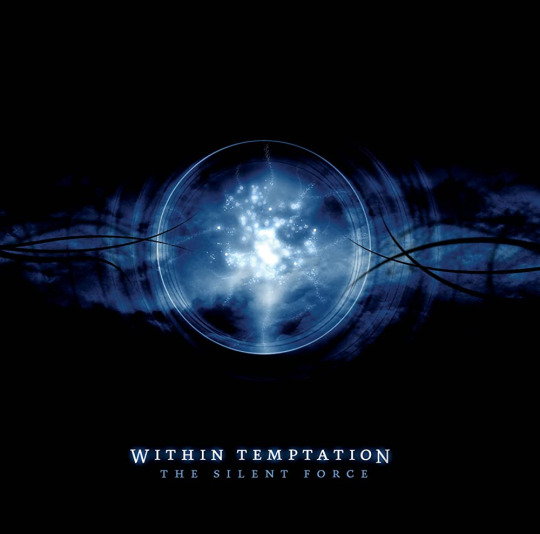
Although you’re likely to be distracted by the captivating strength of Sharon den Adel’s upfront vocal dynamism, Within Temptation’s symphonic aspirations reached their most querulously romantic apex on this goosebump-inducing masterwork of the form. Although the guitars were louder and crunchier than on 2000’s Mother Earth, and the open- hearted pop savvy was at full widescreen pelt, this 2004 follow-up confirmed the band’s special affinity for wizardly orchestral bombast, here performed by the Ego Works Session Orchestra, under the noted Russian conductor Felix Korobov.
Epica – The Quantum Enigma (2014)

Formed by former After Forever guitarist Mark Jansen, Epica played a crucial part in the development of symphonic metal via a string of consistently impressive releases, but with The Quantum Enigma – their sixth studio record – the Dutch band raised the bar to a whole different level, hiring a live chamber choir and a string orchestra to enhance a collection of tunes that is uniformly strong. Throw in the soaring vocals of flame-haired mezzo-soprano Simone Simons and the results are seismic.
Nightwish – Endless Forms Most Beautiful (2015)
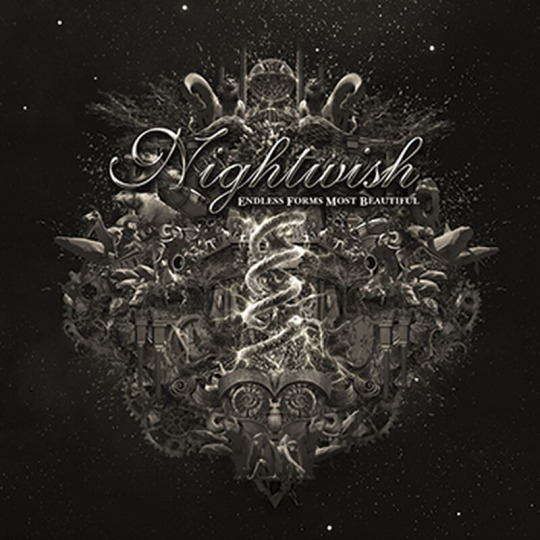
You could pick anything from 2000’s Wishmaster onwards, but the Finns’ first album with Floor Jansen represents Peak Nightwish in terms of a grandiosity. A high-concept exploration of evolutionary science, featuring narration from scientist Richard Dawkins, it’s an absolute triumph. From the full-pelt throttle of Shudder Before The Beautiful and cinematic bombast of Weak Fantasy to the life affirming anthemia of Alpenglow, it’s a constant stream of brilliance. Then there’s The Greatest Show On Earth, a 25-minute show-stopper most bands could only dream of writing. It’s no surprise this was the record that turned Nightwish into festival and arena headliners.
#therion#secret of the runes#after forever#decipher#within temptation#the silent force#epica#the quantum enigma#nightwish#endless forms most beautiful
133 notes
·
View notes
Text
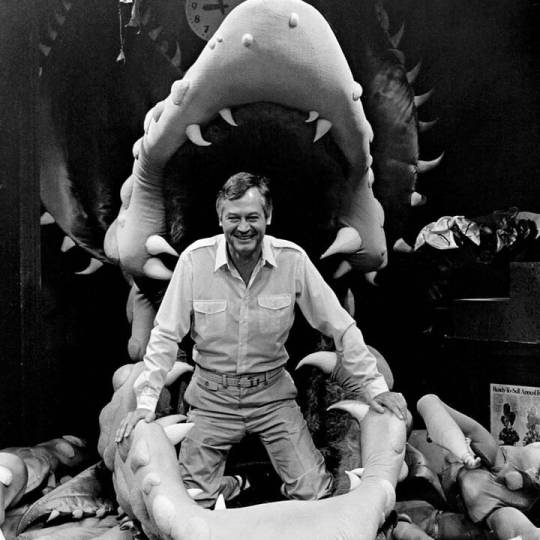
Roger Corman
American film director and producer who liked to describe himself as the ‘Orson Welles of the Z movie’
Although Roger Corman, who has died aged 98, directed more than 50 films, he will be remembered mainly as an influential producer and genial godfather to the New American Cinema of the 1970s. The list of his beneficiaries makes up a Who’s Who of contemporary American film. Martin Scorsese, Peter Bogdanovich, Francis Ford Coppola, Monte Hellman, and Jonathan Demme were all directing proteges of Corman.
“You can see right away that the guy’s a superior producer,” said Jack Nicholson, who appeared in five films directed by Corman. “He’s the best producer I’ve met in the business. The man carried me for seven years. I feel tremendously indebted to him.”
But to pre-70s cinemagoers, Corman was an auteur in his own right, describing himself as the “Orson Welles of the Z movie”. The schlocky titles of the majority of his films disguise the fact that Corman was an extremely cultured, elegant and well-spoken man, without the slightest hint about him of the rock’n’roll counterculture in which he played an important part. He also had cameo roles in about 30 films, including as an FBI director in Demme’s The Silence of the Lambs (1991), and a senator in Coppola’s The Godfather Part II (1974).
Corman’s filmography as a director can be roughly divided into three groups: the quickies (1955-60), the adaptations of the works of Edgar Allan Poe (1960-64), and the mainstream experiments (1966-70). In the first period, on a tiny budget and in rented studios, he produced and directed such Z movies as Attack of the Crab Monsters (1957), Teenage Caveman (1958) and She Gods of Shark Reef (1958). Science-fiction horror with tatty special effects, cut-price monsters and unknown casts, they were aimed at the drive-in movie youth market.
He would produce up to seven films a year, his fastest being The Little Shop of Horrors (1960), which was reputedly shot in two days and a night. It was filmed using the same sets as A Bucket of Blood (1959), a self-referential black comedy. Corman once joked he could make an epic about the fall of the Roman empire with two extras and a sagebrush.
In slight contrast was the Poe series, amusing shockers in widescreen and colour. These included House of Usher (1960), The Pit and the Pendulum (1961), The Raven (1963), The Terror (1963) and, perhaps the best, The Masque of the Red Death (1964).
Greater commercial success came with such films as The St Valentine’s Day Massacre (1967) and Bloody Mama (1970), but soon afterwards Corman retired as a director. His reasons were manifold: he had made around 26 films in 10 years and felt the need of a rest; he also complained that when he made cheap films nobody tinkered with them, but as a big-budget director everyone seemed to think they had the right to maul his work. “Specifically, a picture I made called Gas-s-s-s for AIP [American International Pictures], which was completely recut,” Corman said.
“It was a controversial kind of a comedy, and AIP cut all the funny stuff right out of the film, including the entire ending. The film was never shown anywhere as I shot it, and I felt, frankly, they emasculated the picture and destroyed any possibility of success.”
He was born in the city of Detroit, Michigan, to William Corman, an engineer, and Anne (nee High). His paternal grandparents were Russian-Jewish immigrants, and his mother was of German ancestry.
The family moved to California and Roger went to Beverly Hills high school before beginning an engineering degree at Stanford University. It was the middle of the second world war, and he spent two years as a navy cadet before finally graduating in 1947. He entered the movies at 20th Century-Fox as an errand boy, but then, under the GI Bill, took off to study English literature at Oxford University for six months, followed by six months in Paris.
In 1954, Corman sold a low-budget script to Allied Artists. It was released as Highway Dragnet, for which he insisted on an associate producer credit. But he was disappointed with the film and, believing that he could do a better job as a producer, scraped $12,000 together to make Monster from the Ocean Floor (1954), directed by Wyott Ordung.
After selling the film for a profit of $100,000, Corman scripted and produced The Fast and the Furious (1954). Shot in 10 days by the film’s star, John Ireland, it was distributed by a small new company, American Releasing Corporation, later renamed American International Pictures, with Corman as its house director.
In the early 60s, for AIP, he made his series of adaptations from Poe, a favourite writer of his since childhood. Using the team of the designer Daniel Haller, writer Richard Matheson and cameraman Floyd Crosby, he created garish, camp and amusing shockers, taking their tone from Vincent Price’s sibilant, ghoulish hamming.
They were sometimes referred to as “late wife” movies because, in most of them, Price had a deceased wife lying around a castle. Taking only 15 days to shoot, they contained scenes and sets interchangeable from one film to the next, but they were popular and gathered a cult following.
A departure from the horror genre of the period, and one of Corman’s favourites, was The Intruder (1961), a gritty social drama in which a rabble-rouser (William Shatner) arrives in a southern town to disrupt racial integration in the schools.
Corman’s taste for updated American Gothic was evident in the biker movie The Wild Angels (1966), which featured actual Hells Angels, and The Trip (1967), an indulgent plunge into psychedelia written by Nicholson. Both starred Peter Fonda, who went on to produce – and star in alongside Nicholson and Dennis Hopper – the Corman-influenced Easy Rider (1969).
Corman’s blood-splattered recreation of 1928 Chicago in The St Valentine’s Day Massacre was more tightly controlled and wordier than his usual product, with impeccable performances from Jason Robards as Al Capone and Ralph Meeker as Bugs Moran. In the cold-eyed and unromantic Bloody Mama, Shelley Winters let rip as Kate Barker, the murderous matriarch of a gang of outlaws, with an unknown Robert De Niro playing her son.
Corman followed up that success with a tale of another female gangster, Boxcar Bertha (1972), hiring a young Scorsese as director.
He gave up directing after The Red Baron (1971) nose-dived at the box office. Phony German accents were dubbed in against his wishes. However the dog fights, actually filmed in the air, gave the first world war flying sequences authenticity.
In 1970, he set up his own company, New World Pictures, and continued to produce formula films for the youth market, abiding by the profitable philosophy “make ’em quick, make ’em cheap and make ’em popular”. These included motorcycle movies (Angels Die Hard); sexploitation flicks (Night Call Nurses, Fly Me, Caged Heat!, the latter directed by Demme) and horror films (Night of the Cobra Woman), but the company also distributed films in the US at the opposite end of the creative scale, such as Ingmar Bergman’s Cries and Whispers (1972) and Federico Fellini’s Amarcord (1973).
In 1990, Corman sat down in his director’s chair once more and made Frankenstein Unbound, with John Hurt and Raul Julia, which proved he could still spin a gory tale, though, alas, without the success of earlier years.
However, the title of his 1998 autobiography, How I Made a Hundred Movies in Hollywood and Never Lost a Dime, still rang true. He continued to produce and executive produce films into his 90s. In 2009, he received a lifetime achievement Academy Award.
He is survived by his wife, Julie Halloran, a film producer, whom he married in 1970, and their four children, Roger, Brian, Mary and Catherine.
🔔 Roger William Corman, film director, producer and actor, born 5 April 1926; died 9 May 2024
Daily inspiration. Discover more photos at Just for Books…?
16 notes
·
View notes
Text
also im starting to see the difference between the domestic and international animation studios on the show
One minute, you have some really good animation courtesy of Digital eMation.
Next minute, animation tweens and stiff click-em-in poses frame by frames whatchamacallits done by World Leaders/Noodlesoup
While not as noticeable in season 3, season 1 is defi guilty of this and in fact venture bros going widescreen meant the domestic team stepped up their game and gotta say im proud of them
3 notes
·
View notes
Text
Alien (1979) : Movietalk # 10

The rare instance where this could’ve easily been a PG-rated joint – at least then Kenner wouldn’t’ve had a hard time making bank on this then-hot-n-ready new monster property. I’ve confided with some of my fellow buckaroos on Letterboxd before that the first and last time I saw Alien was years ago through a blown-to-fullscreen local cable edit but I never figured the real deal (a THX digitally-mastered widescreen dual-layer disc as Jonesy intended) would still be just as tame – what they do, trim out those split-second frames of blood and guts goulash to get a TV-14?
Maybe it’s time, maybe it’s age, maybe it’s the dwindling susceptibility of magic we always suspect from our older selves before it punches us square in the face and makes children of us all again, but one thing’s for sure it’s not because the Xenomorph is seemingly forevermore the Kenner action doll. Even if we find the form of the monster too recognizable to be stunned by the classic horror catatonic “fear of the unknown” ever again, we the youth can still find in these originating stories the model-works for said fear, the grooves of the First Time so orthophonic we can experience that discomfort firsthand because cinema is one of the finest examples of art, the dichotomic timeless record. Night of the Living Dead (1968) – though the Zombie is all too chummy and the ghouls seem so quaint to the advanced rot-decay décor of today with all their pale-to-the-bone complexions and torn or absent garbs – is still one of the most frightening and harrowing experiences ever caught on film, an eternal late ‘60s that’s perhaps one if not the definite way to inscribe the undead arrogance of its originating country for the ages; horror often comes from the fear of death (in this dark territory it’s practically a food group), but Night is not so much about the moment when death happens as it is the moment we know, in dreadful, absolute clarity, that the great and final Death walks towards us all – the moment when we discover in the futile comforts of our strange new homes that incident becomes epidemic, that this time there shall be no rescue or course-correction this time, not because no one’s there to save us but because Death is now Us the familiar – Death from panic, Death through distrust, Death in the face of kin that eviscerates each other from the threadbares of existence to mounds of nothing flesh. And we witness all this through Barbra’s own shock catatonics, the hopelessly wishful feeling of Judy and Tom, and the ultimate and futile death claw-clash between Ben and the Coops because when the creeping death comes there’s no time to be boss- only time enough to look to the sky.
And Alien, using Night as a template as far as setting itself within a single locale and having only seven characters to spare, makes some of those attributes its own – the fear of death is the fear of rape and vice versa (a weaponized form of reproduction and intercourse that turns the body against you with unfamiliar intruding lifeforms) – yet this is also about as far as the movie goes in successfully replicating its effects. The moments where the primal fear is realized are plenty evident, whether it be the facehugger impregnation cycle as surrogated through Kane, the moment when Ash tries to suffocate Ripley with a rolled-up porno mag, or that final battle of titillation between Ripley and the Alien on the escape shuttle craft (the erect mouth-rodded tongue retreats to its fleshy-industrial folds, the perceived-damsel final girl taking up the armor and spear gun) but they all feel so far in between of everything else, a fact made all the more pronounced by the surely-studio-suggested near-two-hour runtime and its unquestioning adhesion to the script’s infrastructure. By slasher standards the characters function as you’d expect from the trade – they have roles and standards that arrive and act on the dot as they do within the confines of that power plant submarine city – but function is also all they do; they work but nothing else; they are pawns to the plot so for the grace of the plot they must die. And maybe that’s ultimately the point, the subtext political to Night’s exhumations of the American condition: that the capital industrial complex erodes nearly everything of thought except for the instance of enacting harm and being hurt, a loss of life and company that for Company’s best interests are forever withered down to the cold equations (number of staff, number of product… let’s cue that ratio, please).
Sounds cool, but I hate to break it that I got as much out of that here as I did reading the quick and sparse synopsi-copy on the back of the Alien Quadrilogy disc set. I understood Parker’s anger over the death of Brett, yet when Brett was snatched up to proto-Cenobite Heaven (no thanks to Jonesy) I realized I barely knew the guy. Or anyone for that matter, except for Ash – and even then his suspicious nature is merely another function, not a character, as is the shock-reveal of him being an extinguisher-intolerant spum-bot. Shock for shock effect can work and has worked, but even if there weren’t any depth or realization there would still be the approach and the method to consider, the very stroke of the splatter and shade of the blind corner shadow that says enough to become its own depth. Maybe it’s subjectivity, maybe time really hasn’t been so kind after all, or maybe it’s just between this and Blade Runner that I don’t care all that much for Ridley Scott the director. This is Texas Chain Saw Massacre for space truckers, a Conquest of the Sex Pest to Star Trek: The Motion Picture’s Groovy Sex Odyssey… how is it still this milquetoast and stuck-up!? It has my sympathies, but I too am left feeling groggy for the cryo-bed. Wake me up for the next drop.
#alien#alien 1979#ridley scott#alien franchise#alien series#movie review#consider the following#movies#movietalk#more to come
3 notes
·
View notes
Text
Here's a pet peeve of mine:
When DVD first came out, a lot of publishers either didn't understand or didn't care to understand the format, and this affect how they choose to format some widescreen movies. See, architecturally DVD only really supports two aspect ratios: 4 to 3 and 16 to 9. In either case, the resolution will be the same (720x480 @ 30fps or 720x576 @ 25fps), but in widescreen these pixels are horizontally stretched.
Now, many widescreen films are not a 16 to 9 aspect ratio, necessitating black bars ("letterboxing") below and atop the actual video, like this:

The Black Hole (1979), 2004 DVD release
This wastes bandwith, of course. In that Black Hole example, a whole 23% of the video data on that disc is being wasted on black bars. The effective resolution is only 720x368! But it's the better than the alternative: encoding widescreen video as letterboxed 4 to 3. Here's the widescreen version of A Fistful of Dollars' 1999 release:

A Fistful of Dollars (1964), 1999 DVD release
53% of that video is black bars. That's more than half! We're left with an effective resolution of only 720x196, and on my monitor (16 to 10 aspect ratio), the movie is left looking pretty stupid:

It's not awful, and VLC can alleviate the windowboxing by cropping, but you still have to suffer the compromised vertical resolution.
Fortunately for us film enjoyers with eyes, this basically stopped being a problem around the mid 2000s. Widescreen televisions had finally started selling in real numbers, so studios started having to care. This particular formatting problem only only really affects you if you buy all your movies from thrift stores, like I do.
Unfortunately, Blu-ray sort of re-introduced this problem in the other direction. HD and UHD Blu-rays can only store video in 16 to 9 widescreen. This is basically fine for most people, given that 16 to 9 displays are really the only kind anyone makes anymore (well, for TVs and computers anyway). I am not most people. Here's Evangelion on my monitor:

Neon Genesis Evangelion (1995), 2021 Blu-ray The Complete Series release
Ooh, so close. VLC will let us crop to 4:3 to remove the letterboxing, but for whatever reason this fucks up the captioning layer.

No clue why, can't figure out how to fix it. This affects DVD subtitles too, but fortunately most of my DVDs with aspect ratio problems are English-language and thus don't need subtitles. Not so here. This seems to be a long-standing bug in VLC, and it looks unlikely anyone is working on fixing it.
Aspect ratios suck.
2 notes
·
View notes
Text
Marvel vs. Capcom 2: New Age of Heroes

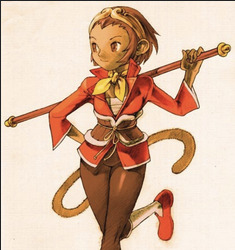
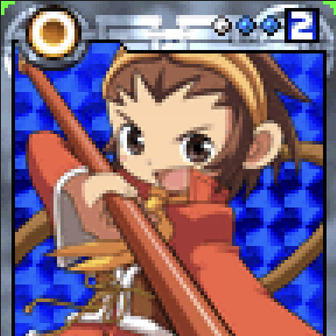
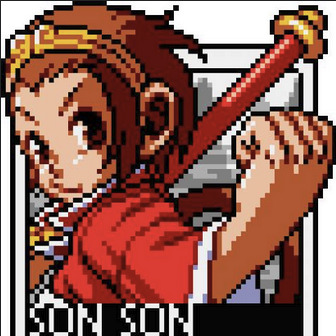
Date: February 24, 2000 Platform: PlayStation 2 / Xbox / Dreamcast / Arcade / Xbox 360 Games Store / PlayStation Network (PS3) / iPhone / iPad Developer: Capcom / Capcom Production Studio 1 / Backbone Entertainment Publisher: Capcom Genre: Fighting Theme: Fantasy / Martial Arts / Superhero / Comic Book Franchises: Marvel vs. Capcom / Capcom Versus / Marvel / Street Fighter X All Capcom / SNK vs. Capcom: Card Fighters DS / SNK vs. Capcom: Card Fighter's Clash 2 Expand Edition Also known as: MVC2 Type: Reimanging
Summary:
Marvel vs. Capcom 2: New Age of Heroes is a 2D tag-team fighting game developed and released by Capcom for the arcades (running the Dreamcast-based Sega NAOMI hardware) on February 24, 2000.
The fourth installment of the Marvel vs. Capcom crossover series, the game doubles the roster of its predecessor (including new additions and returning fighters) while adding new 3-on-3 gameplay and simplified controls (two punch buttons, two kick buttons, and two assist buttons). It also brings back the classic "assist attack" system (sans "partners") while adding a new "snapback" attack (a close-ranged attack that, if hit successfully, swaps the opponent's character with another). A unique aspect of the game is its use of experience points for each arcade machine that increments by playtime, determining how many characters and alternate costumes are unlocked.
One of Capcom's earliest fighting games developed outside of their arcade hardware, Marvel vs. Capcom 2 combines 2D hand-drawn sprites with 3D backgrounds (a style later used for Capcom vs. SNK 2: Mark of the Millennium). It is the last game in the series to use hand-drawn sprites for its characters.
The game was later released for the Dreamcast throughout 2000 (March in Japan, June in North America, and July in Europe), adding a new system of "purchasing" the locked characters/costumes with accumulated playtime (and trading them using the VMU). The Japanese version of the game also includes online multiplayer and the ability to use VMUs with the arcade version (where players can use their unlocked characters and earn experience points). It was later ported to the PlayStation 2 (in September 2002, with the Japanese version including online multiplayer) and Xbox (in September 2002 for Japan and March 2003 for North America).
It was later ported (by Backbone) as a digital release for the Xbox 360 (via Xbox Live Arcade on July 29, 2009) and the PlayStation 3 (via PlayStation Network on August 13, 2009). This version includes online multiplayer (including a six-player lobby system), various graphical options (including widescreen support), support for custom soundtracks, and all content unlocked from the start. The original console version was ported to iOS devices on April 25, 2012 (adding touch controls). These ports were removed from their respective storefronts on December 2013.
Source: https://www.giantbomb.com/marvel-vs-capcom-2-new-age-of-heroes/3030-2612/
Link: https://www.youtube.com/watch?v=tW1FA2AFAzI
#Marvel vs. Capcom 2: New Age of Heroes#Marvel vs. Capcom#Capcom Versus#Street Fighter X All Capcom#SNK vs. Capcom: Card Fighters DS#Marvel#SNK vs. Capcom: Card Fighter's Clash 2 Expand Edition#jttw media#jttw game#video game#game#sonson#son goku#sun wukong cameo#sun wukong#appropriation#inspiration
7 notes
·
View notes
Text
Heroes and Harmony AU
It's been a month since Leonardo, now known as L-Velvet, left his blue mask behind to pursue his true passion - a thriving R&B music career. With his smooth, soulful vocals and heartfelt lyrics, L-Velvet was quickly making a name for himself in the industry, much to the surprise and mixed emotions of his former teammates, the Mad Dogs. His debut album "Shattered Heart" had just dropped, showcasing his incredible vocal range and R&B sensibilities, drawing comparisons to the likes of Brian McKnight, the late Jesse Powell, Johnny Gill, Ginuwine, Tyrese and many other R&B singers and groups of the late 90's and early 2000's. The lead single "Don't Make Me Wait" had become an instant hit, resonating with listeners who connected to its themes of heartbreak and the agony of a crumbling relationship. L-Velvet's influences were evident in the track's emotive delivery and the lush, atmospheric production that enveloped his voice.
The Mad Dogs' first battle without Leo was a disaster, the team struggling to adapt to his absence and the loss of his strategic leadership. Donnie, Raph, Frida, and Mikey felt disjointed, missing the cohesion and harmony that Leo had provided. As L-Velvet's fame began to grow, so did his distance from his brothers and sister. They would occasionally video call him, but the conversation always seemed strained, L-Velvet's focus pulled in a hundred different directions by his burgeoning music career. The other 4 Mad Dogs felt abandoned, unsure of their future without their second oldest sibling to guide them.
Frida, the long-lost sister and former assistant of the villainous Big Mama, stepped up to become the new leader of the team. With her hint of sass and emphatic mind, she whipped the remaining Mad Dogs into shape, developing new battle tactics to compensate for Leo's absence. However, this also sparked a sibling rivalry between Frida and Donnie, the two would constantly butt heads over strategy and decision-making, their disagreements often leaving Raph and Mikey caught in the middle. Meanwhile, the villainous duo of Hypno-Potamus and Warren Stone continued to wreak havoc, their schemes becoming more elaborate and dangerous without the Mad Dogs operating at full strength.
L-Velvet was now living in a luxury cityview home in LA, which according to him, is 10 times better than living in the sewers. With a home studio, a living room with a widescreen TV, and a breathtaking view of the LA city, L-Velvet had fully immersed himself in the glamorous world of the music industry. No longer tethered to the Mad Dogs and their battles, he could focus solely on his craft, crafting hit after hit and planning the next steps in his burgeoning solo career. Though he still cared for his siblings, L-Velvet had made the choice to leave that life behind, determined to make his mark on the R&B scene and cement his legacy as a true musical icon.
As for the Mad Dogs, they were struggling to find their footing without Leo's guidance. Donnie, Raph, Frida, and Mikey were all talented in their own right, but they had grown accustomed to Leo's strategic leadership and his ability to bring them together as a cohesive unit. Without him, they felt lost and disjointed, like a machine missing a crucial part.
6 notes
·
View notes
Text
Capturing the ambience of LEGO Island 2 (2001)
This minigame-packed adventure explores many classic LEGO themes.
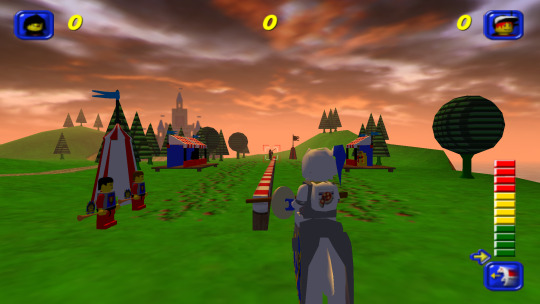
Running the game
There are two main versions of the game to chose from: the original 2001 release, and an improved 2007 version released as part of a two-pack. There is also apparently an unfinished, unreleased v1.1 with some bug fixes.
Curiously, the version hosted on MyAbandonware seems nearly identical to other 2001 releases I found. There appear to be minimal differences between the two.
All versions use a simple disk check; mounting an ISO with a tool like Daemon Tools suffices. There are also No-CD hex-edits available if you're interested.
Debug menu and Level-select
We can access LI2's debug menu by altering the main menu options. I found some hex-edits for this on RRU. If you're not comfortable with hex-edits you can try using a patcher or patch, or LI2 Mod Manager.
04 00 00 00 02 -> 01 00 00 00 11 43 52 45 44 49 54 53 -> 44 45 42 55 47 00 00
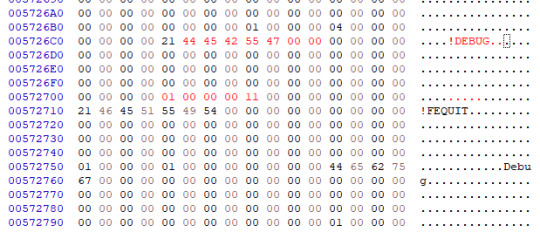
Widescreen
Use the resolution and widescreen hacks offered by LI2 Mod Manager. See this thread for more detail on how it works.
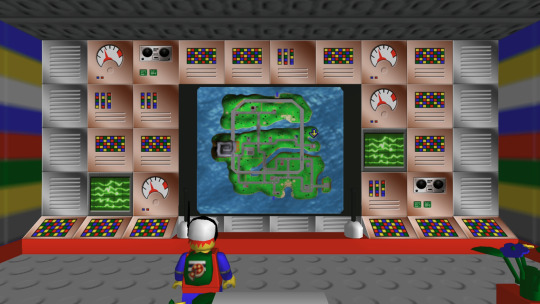
Hiding UI and Player-character
This is possible using Lego Island 2 Game Editor. It's a powerful albeit buggy application for modifying LI2 assets.
If LI2GE doesn't work, for example to edit fonts, you can use Lego Island 2 Extractor and/or Lego Island 2 Explorer. Once installed, be sure to disable automatic updates inside the program's INI to avoid startup crashes.

LI2 will prefer to load files from identically-named folders if they are present in the _data directory. For example, if a Fonts folder exists, its files will be used and Fonts.bob/bod won't be loaded.
We can also pause the game to remove the HUD, screenshot this state, and create a no-HUD overlay for our footage.
(Not) Free camera
A modder devised a way to summon a glider at any time.
Rendering ambience sequences
I recommend using the Fruity LSD effect with FL Studio. First, open the MID file in LEGO Island 2's level files, for example Fishing_Amb.mid. Be sure to select MIDI Out with Fruity LSD in the subsequent dialog.
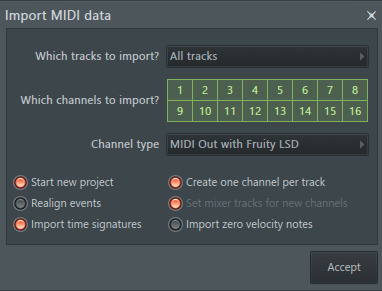
Afterward, click the folder icon in the top left to specify a DLS file - use one found in your MID file's folder. Once it's loaded, populate each channel by clicking it, and picking the corresponding patch. Don't forget to populate the "percussive" one-shots as well (Channel 10 in the screenshot below).
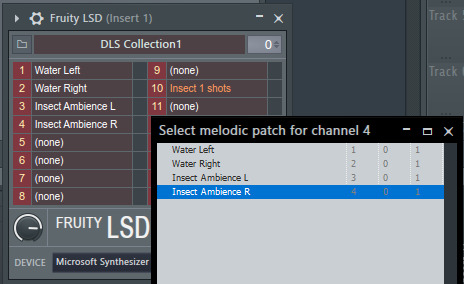
You are now ready to play your MID with the intended samples attached, or export it to a WAV file.
Appendix: Rendering music sequences
Download DirectMusic Producer. Supposedly this program allows you to export samples and sequence data. You could then render the pair using the MIDI renderer of your choice, such as OpenMPT or FL Studio's Directmusic plugin.
Appendix: Ambience sequence dead-ends
I tried VLC, with the DLS configured under FluidSynth, but this gave no output. I tried Miles Sound Tools with a DLS specified, but again - no output. I tried Winamp but seemingly couldn't get in_midi to use a custom DLS file, despite specifying one in the setting dialogs.
Appendix: Other LI2 developer tools
A soak test can be activated by pressing F8 while in windowed mode. You can also spawn a debugger window by pressing F9.
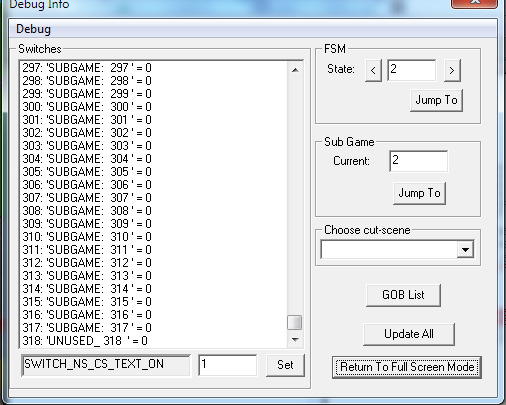
6 notes
·
View notes
Text

B style movie poster by an unknown artist, distributed by the National Screen Service (#55/436), for the 1955 Warner Brothers motion picture Rebel Without a Cause. All three of James Dean's movies were released in WarnerColor, which was a studio name for Eastmancolor, a single strip color process developed by Kodak in 1950. It was easier to use than the three strip Technicolor, but without its permanency, which meant that, overtime, prints were likely to fade and turn pink. The image on film, however, did have a sharpness that Technicolor lacked, which made it the process of choice for widescreen.
5 notes
·
View notes